Sunkoshi landslide a continuous disaster, Nepal
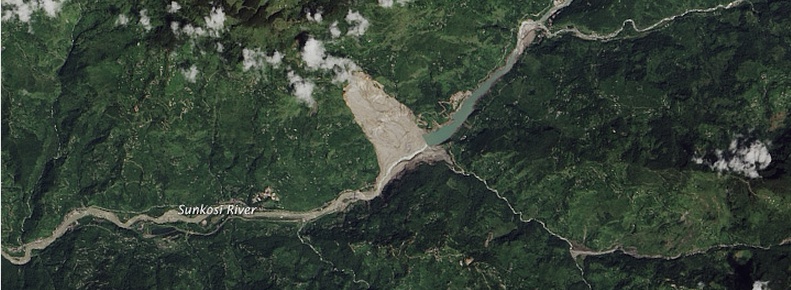
Nearly 2 kilometers of hillside collapsed in rugged northern Nepal at 20:51 UTC on August 1, 2014 (02:36 local time on August 2) causing a massive landslide which buried dozens of homes in the village of Jure and killed 156 people. Some 5.5 million cubic meters (194 million cubic feet) of rock and debris tumbled down into the Sunkohsi (Sunkosi) River valley.
But this was just the beginning of the disaster. The landslide blocked the Sunkoshi River and buried the Araniko Highway. For nine hours after the slide, a gauging station downstream showed the Sunkoshi’s flow had stopped. Water backed up behind a 55-meter (180-foot) tall earthen dam, creating an ever-growing lake that submerged dozens of houses and a hydropower substation.
According to media reports, the loss of the power station led to a 10 percent decrease in Nepal’s electricity generating capacity, causing outages in the capital and elsewhere in the country. (EO)
One of the first images:
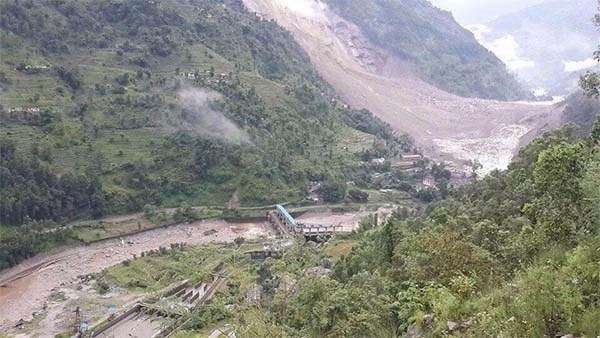
A view of the landslide from downstream, Image credit: Only Nepal.
Only 18 bodies have been discovered by August 4, but the number of people missing was thought to be about 155, making this the most costly landslide in Nepal for many years.
It was reported to be about 45 m high at the highest point and 25 m at the lowest.
News reports on August 5 suggested that 57 houses were lost in the debris. The landslide force inversion suggests that the landslide mass was about 13.5 million tonnes, which corresponds to a volume of about 5.5 million cubic meters.
Based on this it appears that the Sunkoshi landslide started as a rockslope failure in the upper reaches – there may be a rotational component, although this is hard to tell, which then triggered a deep failure in the lower section (below the bedrock bench). It is interesting to note the freshly fractured rock in the upper scarp and the flow of water over the face in this region. The landslide spread laterally by some distance to generate a broad, low angled landslide mass. (AGU/The Landslide Blog)
Nepal Army carried out eight blasts to resume the regular course of the Sunkoshi River on August 13. As per the measurement carried out in the afternoon the internal water current in the artificial lake on that day was 255 cubic sec while the external current stands at 397 cubic sec.
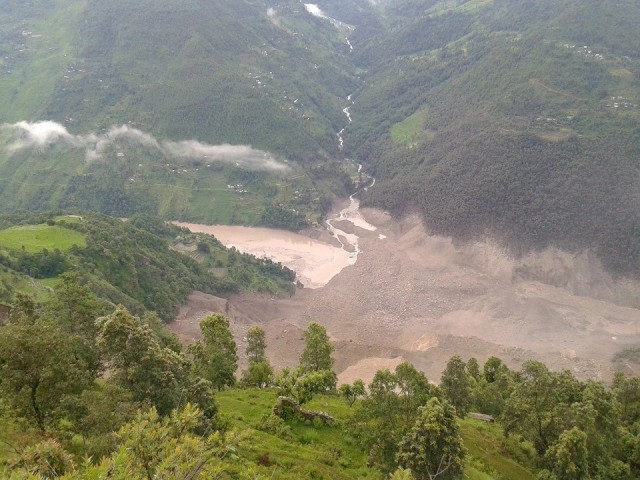
The landslide from the slope above: Image credit: Only Nepal.
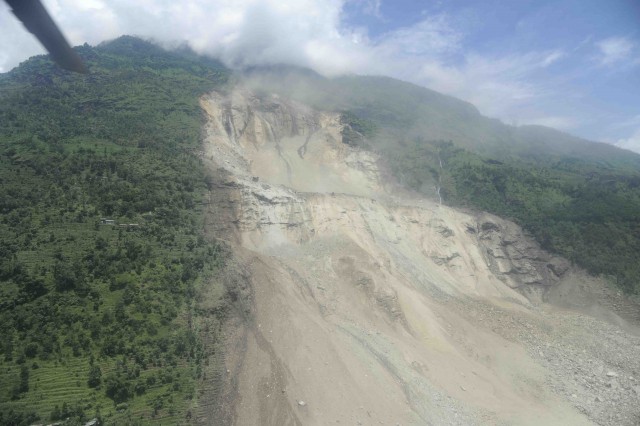
Courtesy of the Nepal Army and Kunda Dixit
The government thru the Nepalese army quickly set to digging and blasting two outlet channels into the dam in an attempt to drain the lake. With tens of thousands of people living in cities and villages downstream, geologists were concerned a sudden breach could cause devastating floods.
However, 17 days later, the Nepalese Army was still digging, and the level of the lake had yet to change, most likely because efforts were focused on widening rather than deepening the outlet channels.
ICIMOD collation re Sunkosi landslide: dam length 409m, width 106m, height 55m, volume/material: 6mill m3, lake length 3km, volume 8mill m3.
— Kanak Mani Dixit (@KanakManiDixit) August 18, 2014
Early on September 6, Nepalese authorities caught a break when the dam breached without a warning, probably because of extra pressure after heavy rainfall increased the river’s flow. Fortunately, even though the surge of water damaged homes as far as 6 kilometers (4 miles) downstream of the dam, the floods were less severe than initially feared. Due in part to widespread evacuations of downstream villages, no casualties were reported.
As the monsoon rains continue through the September landslides still cause major disruption and the major river-blocking Sunkoshi landslide continues to confound the attempts by the army to draw down the lake, despite the presence of heavy machinery and now over 50 controlled blasts by the Nepal Army.
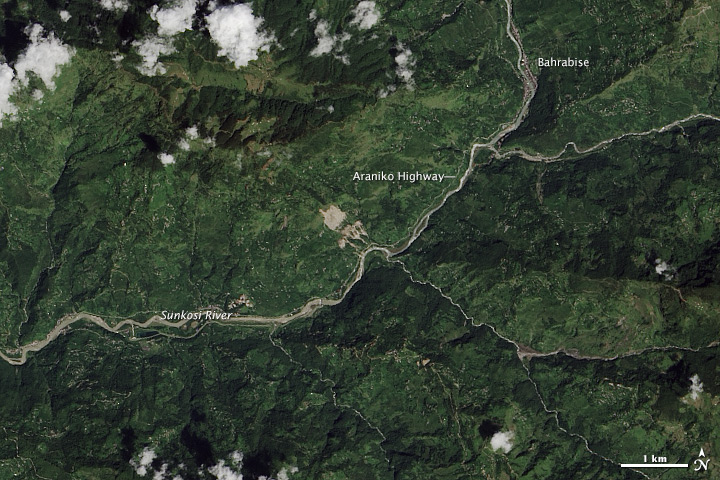
Before the landslide. Image acquired September 15, 2013. Image credit: Landsat

After the landslide. Image acquired September 2, 2014. Image credit: Landsat
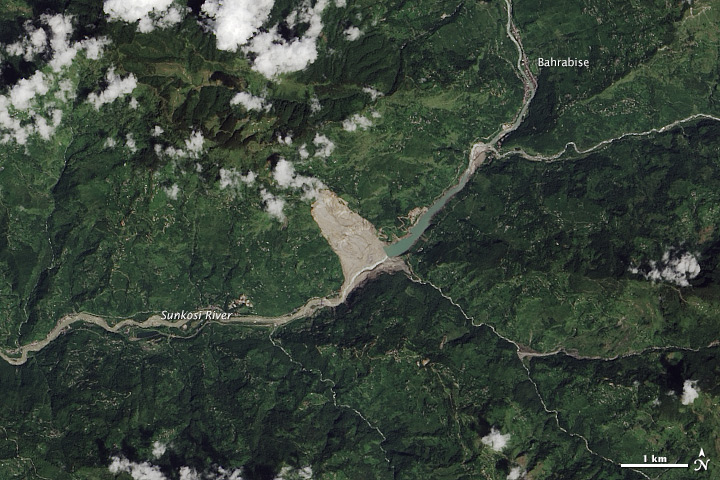
After the landslide. Image acquired September 18, 2014. Image credit: Landsat
Sources: EarthObservatory, LandslideBlog, MyRepublica
Featured image credit: Landsat

Commenting rules and guidelines
We value the thoughts and opinions of our readers and welcome healthy discussions on our website. In order to maintain a respectful and positive community, we ask that all commenters follow these rules:
We reserve the right to remove any comments that violate these rules. By commenting on our website, you agree to abide by these guidelines. Thank you for helping to create a positive and welcoming environment for all.